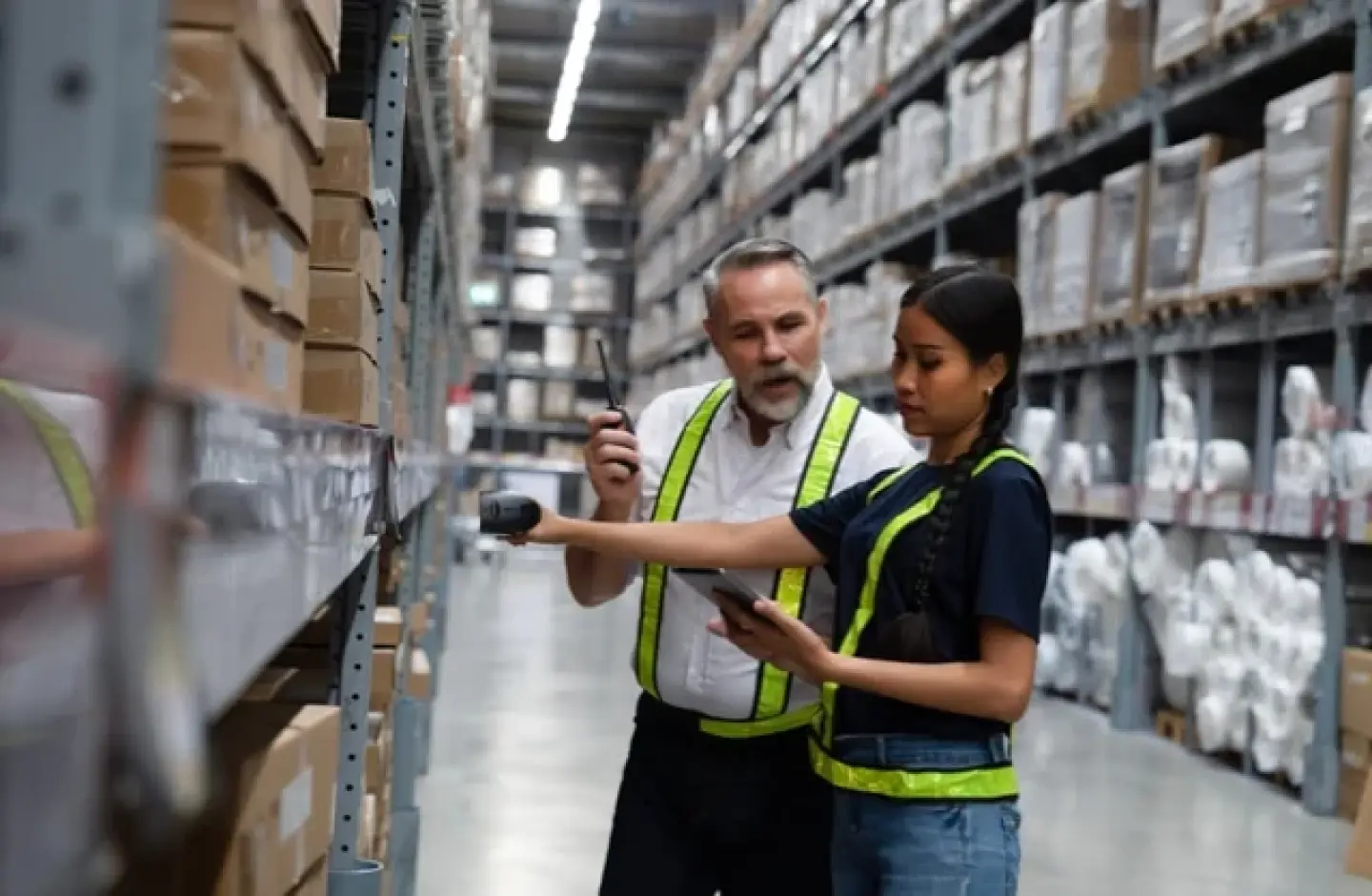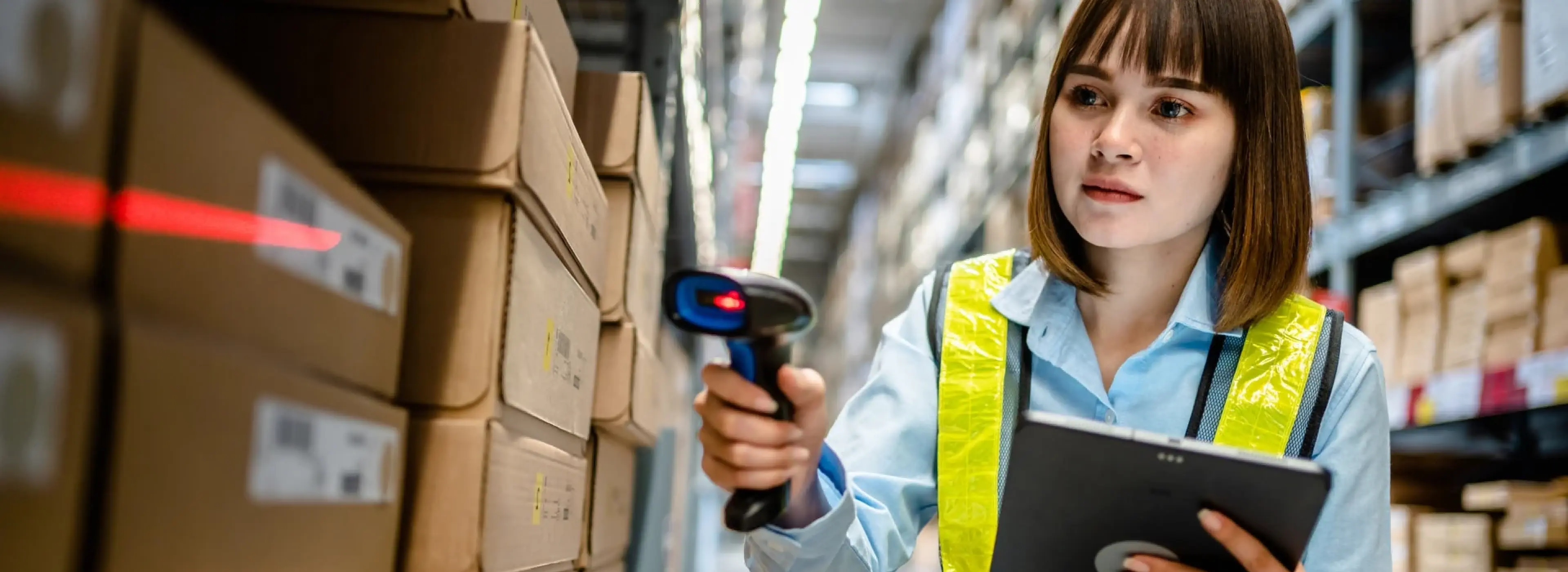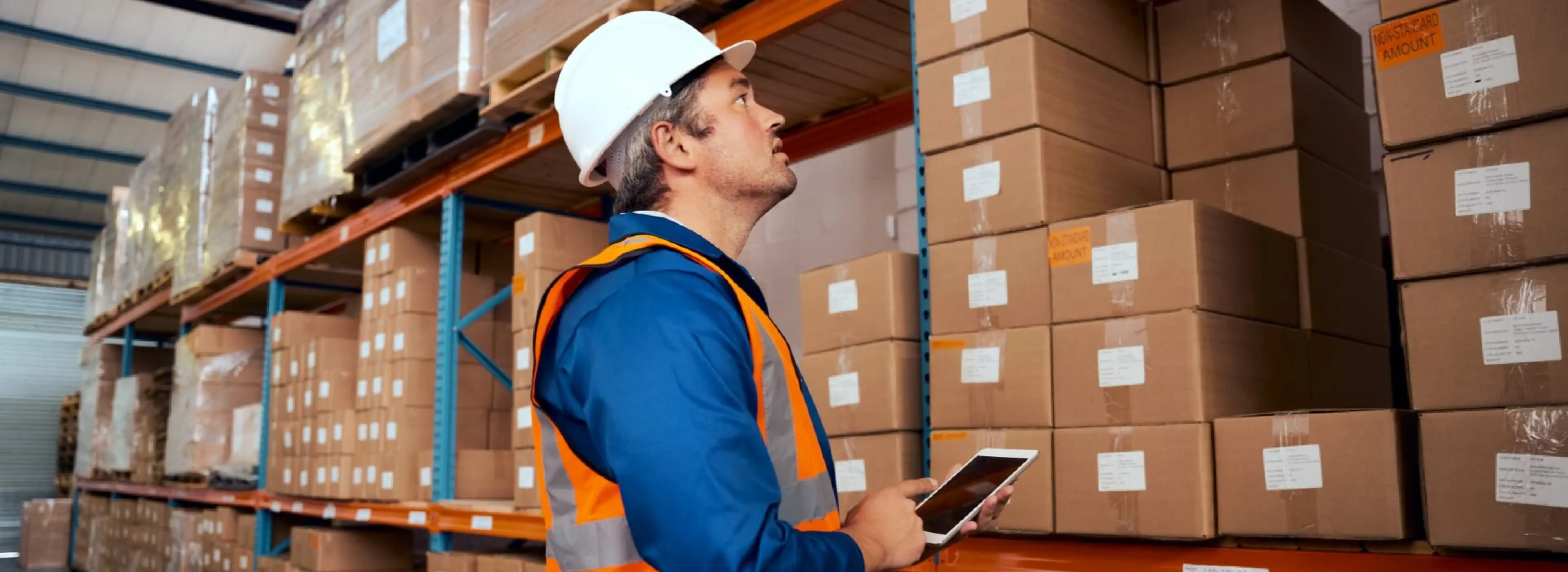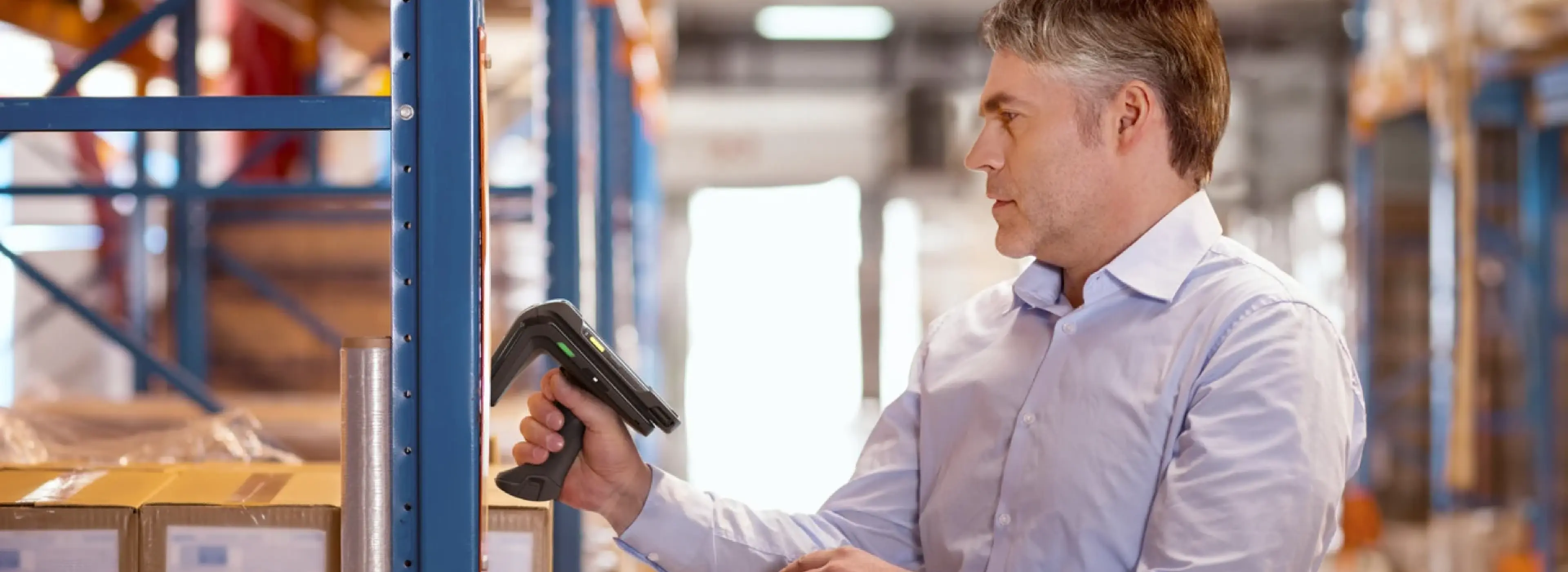With the increasing complexity of supply chain management, warehouse barcoding has become an essential tool for streamlining inventory management. By integrating barcodes into your warehouse operations, you can easily track products, minimize errors, and improve overall productivity.
Click Here: Boost Warehouse Efficiency With This Advanced and Affordable WMS
In this guide, we’ll cover the fundamentals of warehouse barcoding. We will discuss the benefits of using barcodes, the different types of barcodes, and how to implement a barcode system into your existing operations. Additionally, we’ll provide some best practices to help you keep accurate inventory records and offer tips for maintaining and troubleshooting your barcode systems.
To start with this ultimate warehouse barcoding guide, read the full article below.
What is Warehouse Barcoding?
Warehouse barcoding is the use of barcodes to manage and track inventory in a warehouse or distribution center. This technology streamlines warehouse operations, enhances accuracy, and improves efficiency.
Barcoding in a warehouse environment typically involves the following key elements:
- Barcode Labels: Each item, pallet, or storage location in the warehouse is assigned a unique barcode label. This label is affixed to the item or the storage location.
- Barcode Scanners: Warehouse workers use handheld barcode scanners or mobile devices equipped with barcode scanning capabilities. These devices are used to read the barcode labels on items or storage locations.
- Warehouse Management Systems: Warehouse Management Systems (WMS) or Inventory Management Systems (IMS) are used to capture and process the barcode data. These software systems maintain a digital record of inventory items, their quantities, locations, and other relevant information.

Benefits of Barcoding in Warehouse Operations
Warehouse barcoding offers numerous benefits over traditional inventory management practices.
- Real-Time Tracking: One of the most significant advantages is tracking products near real-time, enabling you to monitor inventory levels and make informed decisions about restocking.
- Reduce Errors: Barcode scanning also reduces the risk of human error, eliminating the need for manual data entry. This means you can minimize the risk of incorrect inventory counts, reducing the likelihood of stockouts and overstocking.
- Improved Efficiency: Another benefit of warehouse barcoding is improved efficiency. With barcode scanning, employees can quickly locate and scan items, reducing the time it takes to complete tasks. This translates into increased productivity and reduced labor costs.
Overall, warehouse barcoding can help you achieve greater accuracy, efficiency, and productivity in your warehouse operations. By implementing a barcode system, you can streamline inventory management and improve the bottom line for your business.
Common Barcoding Technologies Used in Warehouses
There are several common barcoding technologies used in warehouses, each with its own advantages and disadvantages. The most common types of barcodes used in warehouse operations include Code 39, Code 128, and Data Matrix.
- Code 39: These barcodes are simple and easy to read, making them a popular choice for basic inventory management. However, they are limited in their data capacity and may not be suitable for more complex operations.
- Code 128: These barcodes, on the other hand, are more versatile and can hold more information than Code 39. They are commonly used in retail and distribution settings, where inventory tracking is critical.
- Data Matrix: These barcodes are another popular choice for warehouse operations, as they can hold large amounts of data in a small space. They are often used for tracking and tracing products, as well as for inventory management.
Ultimately, the choice of barcode technology will depend on your specific warehouse operations and needs. It’s important to carefully consider the benefits and limitations of each type of barcode before making a decision.
Choosing the Right Barcoding System for Your Warehouse
When considering a barcoding system for your warehouse, there are several crucial factors to remember. One of the most significant considerations is the compatibility of the barcode system with your existing warehouse management system (WMS). Choosing a barcode system that can be smoothly integrated with your WMS is essential to ensure seamless data transfer and eliminate the need for manual data entry.
Another critical factor to consider is the type of barcode scanner you will use. There are various types of scanners, including handheld, fixed-mount, and wearable scanners. Each has unique advantages and disadvantages, so selecting the one that best matches your warehouse operations is crucial.
The environment in which your barcode system will be used is also an important factor to consider. For instance, if your warehouse environment has a lot of dust or debris, you might want to consider choosing a rugged barcode scanner that can withstand harsh conditions.
Lastly, it is essential to consider the cost of the barcode system. While barcode technology can save you money in the long run, significant upfront expenses may be associated with implementing a new system. Therefore, it is crucial to carefully weigh each system’s costs and benefits before deciding.
Implementing a Barcoding System in Your Warehouse
Implementing a barcoding system in your warehouse can be a complex process, but it doesn’t have to be overwhelming.
- The first step is to assess your current inventory management practices and identify areas where barcode technology can improve efficiency and accuracy.
- Next, you’ll need to choose the right barcode system for your warehouse, as discussed in the previous section.
- Once you’ve chosen a system, you’ll need to implement it across your entire warehouse operations, including inventory management, receiving, and shipping.
- Training your employees on the new barcode system is critical to its success. Be sure to provide comprehensive training on how to use the barcode scanner, as well as how to troubleshoot common issues.
- It’s also important to establish standard operating procedures (SOPs) for using the barcode system. This will help ensure consistency across all warehouse operations and minimize the risk of errors.

Best Practices for Barcoding in a Warehouse Setting
To ensure accurate scanning and recording of inventory, there are several best practices to follow when using barcode technology in a warehouse setting. Here are some of them.
- Ensure barcodes are placed in a consistent location on each product.
- Ensure that the barcode scanner is held at the correct distance from the barcode. This will help ensure accurate scanning and minimize the risk of errors.
- Regular maintenance and calibration of the barcode system are critical to its success. Be sure to regularly clean the barcode scanner and ensure that it is functioning properly.
- Regularly audit your inventory to ensure that the barcode system is accurately tracking products. This will help you identify any issues and make necessary adjustments to improve accuracy.
Troubleshooting Common Issues with Barcoding Systems
Despite its many benefits, barcode technology can sometimes encounter issues that can hinder your warehouse operations. Common issues include barcode scanning errors, barcode degradation, and connectivity issues.
To troubleshoot these issues, it’s important to first identify the root cause. This may require working with your barcode system provider or conducting a thorough audit of your warehouse operations.
Once the root cause has been identified, you can take steps to address the issue. This may include replacing damaged barcodes, recalibrating the barcode scanner, or upgrading your barcode system to a more robust solution.
Integrating Barcoding with Other Warehouse Management Systems
Integrating barcoding with other warehouse management systems, such as inventory management software and enterprise resource planning (ERP) systems, can help streamline your warehouse operations even further.
By integrating these systems, you can ensure seamless data transfer and minimize the risk of errors. This can also help improve productivity and reduce labor costs, as employees will no longer need to manually enter data into multiple systems.
Conclusion: The Future of Warehouse Barcoding
Warehouse barcoding is an essential tool for streamlining inventory management and boosting efficiency and accuracy in your warehouse operations. By implementing a barcode system and following best practices, you can achieve increased productivity, reduced labor costs, and improved accuracy.
As the supply chain continues to evolve, barcode technology will become even more critical for warehouse operations. By staying up-to-date on the latest barcode technology and best practices, you can ensure that your warehouse operations remain competitive and efficient for years to come.
For more information about streamlining warehouse operations or the latest warehouse technologies trends, you can follow us on LinkedIn, YouTube, Twitter, or Facebook. If you have other inquiries or suggestions, don’t hesitate to contact us here. We’ll be happy to hear from you.











